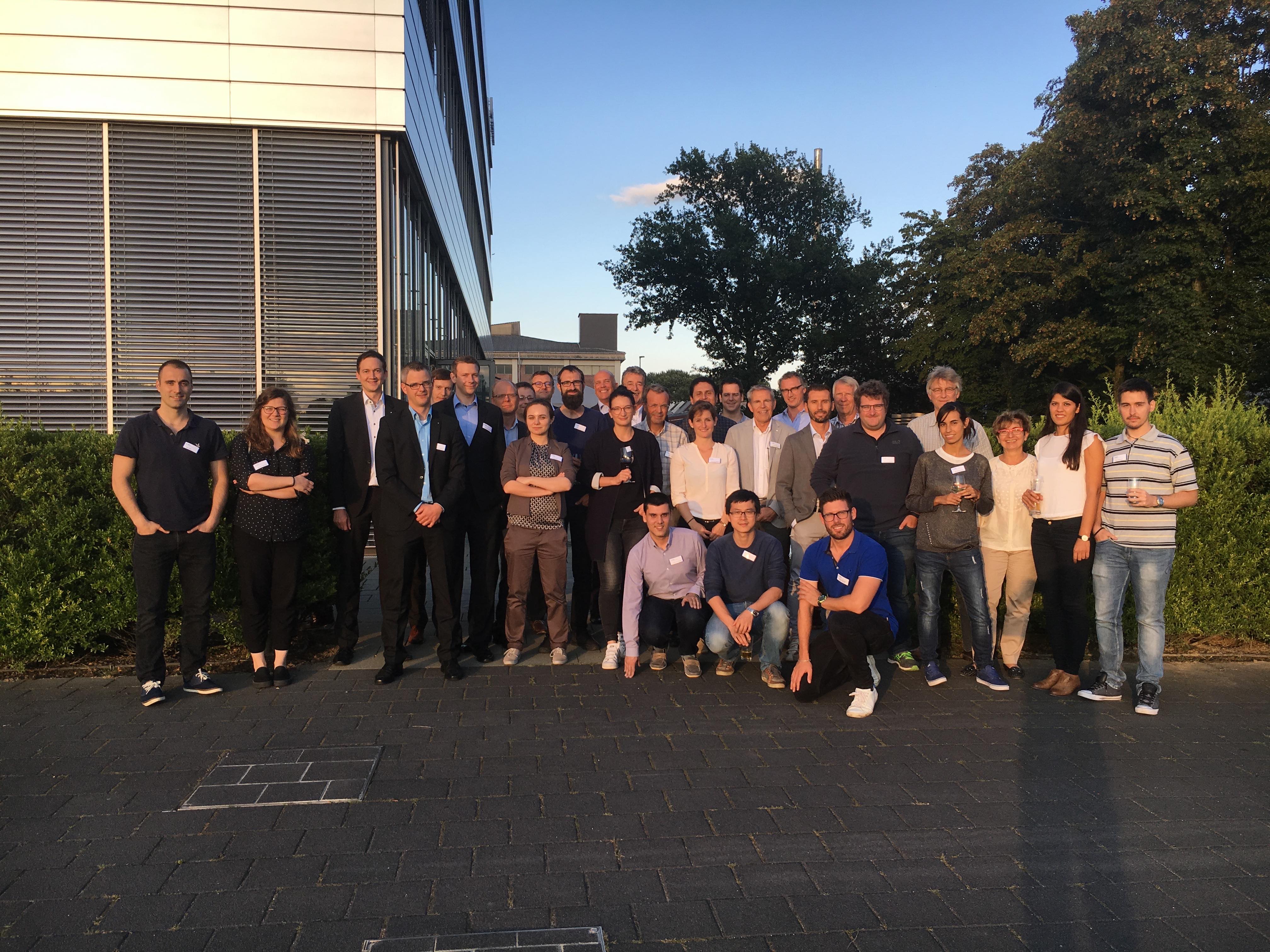The 6th and final training module of the SASSYPOL ITN brought us all to Wesel in Germany. The module was focused on research from an industrial perspective and consequently, was hosted by industrial partner ALTANA at their headquarters. This served as a fantastic opportunity for the ESRs/ERs to get a taste of research in Industry and how it compares to an academic setting.
Day 1
We arrived at Wesel around mid-day and the meeting began with an introduction to the ALTANA group given by Dr. Jürgen Omeis who serves as the Head of Corporate Innovation Science Relations (the slides of his talk can be found here). ALTANA are a global specialty chemical group and comprise of the holding company ALTANA AG and four operating divisions: BYK Additives & Instruments, ECKART Effect Pigments, ELANTAS Electrical Insulation, and ACTEGA Coatings & Sealants. They currently have 48 operational companies and more than 50 research laboratories worldwide.
The second lecture of the day was given by Dr. Tonny Bosman who is the Chief Executive Officer at Suprapolix, an industrial partner of the SASSYPOL ITN. His talk was titled R&D from an Entrepreneurial Perspective and told the very interesting story into the formation of the company. The company was originally a spin-out from the Technical University of Eindhoven based on the work performed in the groups of Prof. Bert Meijer and Prof. Rint Sijbesma. This has led to the development of materials which benefit from the sophisticated design of self-complementary quadruple hydrogen bonding units (UPy or UreidoPyrimidone). Slides from Tonny’s talk can be found here.
In between the two Industrial talks, some of the ESR/ERs gave their research updates from the past 6 months. With quite a few industrial based representatives from ALTANA present for the meeting, it was a very different audience to the previous training modules. This gave the ESR/ERs a platform to showcase their work to an industrial field and through the audience questioning, a chance to think about how their work could be applied in industry.
Day 2
Day 2 started with another round of the ESR/ERs research updates. Following the updates, Prof. Bert Meijer (TUE) gave the first keynote talk of the meeting. His talk was titled ‘Supramolecular Polymers and Self-Assembly: 25 Years from Research to Industry’, for those who have not been to a lecture from Prof. Bert Meijer it is a fantastic showcase. He spoke about the history behind the discovery of the supramolecular polymer (UPy) and how his research group have investigated both the mechanisms and properties of these self-assembled systems. He also, detailed how he has attempted to apply this technology into industrial and other applications.
After lunch, we were taken on a tour of one of ALTANA’s operating divisions: BYK Additives & Instruments, who share the same site as ALTANA’s head office. The tour was composed of two parts; the research and development labs and the production facilities. It was great to witness first-hand the technologies BYK were developing from a R&D perspective and also, the types of techniques used to characterise their materials. Additionally, the tour of the production plant was also an insightful experience, providing a chance to grasp the scale of manufacturing and processes undertaken at a facility of that size.
Following the tour of BYK, we returned to ALTANA for a seminar from Dr. Ad de Vries on ‘Intellectual Property Protection’. Dr. Ad de Vries is Head of Patents at ALTANA and in his talk he explained the processes that are required to protect technology and ideas. Day 2 finished with the final of the ESR/ERs research updates.
Day 3
In the final day of the training module we were had the second keynote talk of the meeting, which was given by Dr. Renaud Nicolay (EPSCI). His talk was titled ‘Vitrimers systems: properties, challenges and opportunities’ and told the story of the origin of the Vitrimer. The Vitrimer was originally discovered by Prof. Ludwik Leibler in 2008. Vitrimers are an exciting class of material given that they can both be recycled and repair themselves, and at high temperatures they also can be shaped reversibly. Based on Vitrimers unique chemical design and properties, Dr Nicolay explained the challenges which they were faced with in applying Vitrimers in an industrial setting, as well as the opportunities they provide in commercial processing such as extrusion, compression and injection moulding.


 Saving...
Saving...